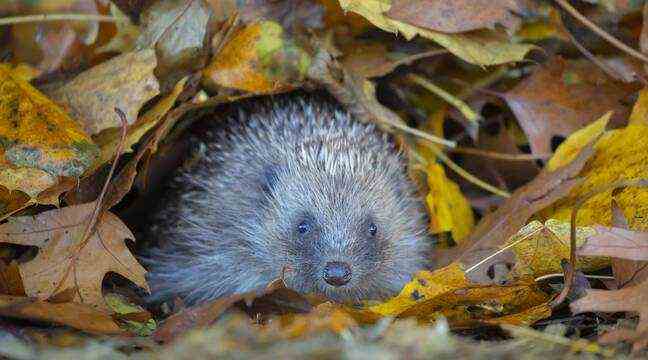The message is not lacking in spice and capital letters intended to alert readers. Supporting photo of a cute hedgehog, a text particularly relayed on social networks gives a list of recommendations to follow in order not to harm the wild animal. Problem: There are a lot of inaccuracies in this post. Above all, she forgets the essential reasons for the probable decrease in the hedgehog population in France.
FAKE OFF
Written in the first person, the text immediately states: “Especially NO MILK or I risk dying!” “” No cow’s milk, corrects Marie Agnès Guichard, president of the Breton association The Hedgehog Hamlet. What to avoid is a product that contains a lot of lactose. It gives them diarrhea, which dehydrates them and can ultimately kill them. The problem is, they are greedy and they eat everything. On the other hand, milk for puppies or cats [dont la teneur en lactose est faible] don’t hurt them. “
The message recommends giving instead “food (raw unsalted meat, minced meat, I also like cat food but not fish) and water.” “” We can give fish in croquettes or boxes for cats to fish, corrects Marie Agnès Guichard. If it is fresh and cooked fish, remove the bones. The hedgehog is not a fisherman like the cat, but fish are not poison for him, unlike bread. “Bread, another toxic food for the hedgehog which is however not mentioned in the viral publication.
However, when it comes to a wild animal, “we absolutely do not recommend feeding it,” slice Marjorie Poitevin, program manager at the LPO (League for the protection of birds). In addition, the food they are given is often too salty. It is better to observe it from a distance. The ideal is not to intervene. “
“Do not use insecticides”
Let’s continue with the claims of the viral post. “I am SAFE and I help in your garden because I feed on insects that attack your vegetables. “” The European hedgehog also eats shelled animals, earthworms, snails, small slugs, anything that comes within reach, adds Marie-Agnès Guichard. He’s an opportunist. “Also, to ensure the development of the mammal, it is better” to have gardens that promote circulation and not use insecticides, which will have the effect of poisoning hedgehogs, explains Marjorie Poitevin. And especially no anti-slugs. “
Milk is not, however, the leading cause of death for European hedgehogs. The head of the LPO first mentions “the disappearance of habitat and food resources”. The fragmentation of the habitat (fences, traffic lanes) hinder “the free movement of the hedgehog”, insists Marjorie Poitevin. She adds as causes of mortality, jumble, poisoning due to pesticides, road collisions, drownings due to swimming pools, accidents with machine tools such as lawn mowers or brush cutters, or even attacks by dog.
So what if a specimen of the animal is found motionless – especially during the day, a sign that it might be in danger? “If he is in distress, if he does not curl up when approached, if he remains in direct sunlight, he must intervene and call a specialized care center in order to obtain advice adapted to the situation, ”advises Marjorie Poitevin, who reminds us that not all veterinarians are authorized to receive wildlife. If the animal must be seized before being put to calm, the wearing of gloves is necessary to “protect yourself and the animal”, she continues. Finally, the spike ball should be transported to a wildlife care facility.
A population a priori in decline in France
“My species is disappearing, help me to stay alive”, begs, finally, the hedgehog in the text relayed on social networks. But is the hedgehog really threatened with extinction? The animal is now placed on the red list of threatened areas – “of least concern” – by
the international union for the conservation of nature. In addition, since 1981, it has been part of the list of protected terrestrial mammals un
stopped. In England, where the species is classified as vulnerable, scientists say the
hedgehog population has been halved since 2000. “Currently, in France, we do not have figures to confirm that the hedgehog population is in decline, but we can imagine that it is not madness, as for many other species, including birds”, warns Marjorie Poitevin.
Hence the interest of “hedgehog” mission created by the LPO. This survey, launched in July 2020, aims to measure the state of the wild animal population in France over several years. Individuals are invited to participate in this study, by asking
footprint tunnels in their gardens or in nature, to observe the behavior and presence of the mammal.
For the moment, “we see that the tunnels placed in urban areas detect, in proportion, more hedgehogs than in rural areas”, specifies Marjorie Poitevin, in charge of the study. The use of pesticides in agriculture and the fact that natural environments, meadows and hedges, where animals roost are becoming scarce may partly explain this phenomenon. The LPO hopes in particular that the data collected during this investigation will make it possible to take protective measures with regard to the European hedgehog. “In addition, concludes Marjorie Poitevin, seeing how the hedgehog is doing will allow us to see, in parallel, how other species are doing, affected in the same way. “

